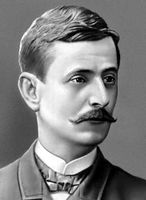 W
WVasil (Vaso) Abashidze was a Georgian theater actor and a founder of a realistic acting tradition in Georgia.
 W
WPrince Konstantine (Kote) Abkhazi, was a notable Georgian military officer, politician and public figure. During the Imperial Russian rule, he was a General-major of Artillery in the tsar's army (1916) and in the national army of the Democratic Republic of Georgia (1918), and a recognized leader of the liberal nobility of Georgia. After the Soviet Occupation of Georgia, he emerged as one of the leaders of an underground anti-Soviet, national-liberation movement. One of the founders of the Tbilisi State University in 1918 and Chairman of the Georgian National-Democratic Party in 1921-1923. In 1923, he was arrested and executed by the Soviet security police.
 W
WGrand Duke Alexander Mikhailovich of Russia was a dynast of the Russian Empire, a naval officer, an author, explorer, the brother-in-law of Emperor Nicholas II and advisor to him.
 W
WGrand Duke Alexei Mikhailovich of Russia was the sixth son and youngest child of Grand Duke Michael Nicolaievich of Russia and a first cousin of Alexander III of Russia. He was destined to follow a career in the Russian Navy, but he died in his youth of tuberculosis.
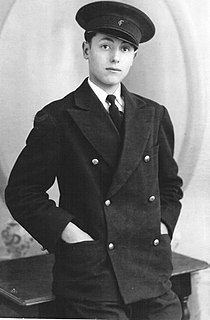 W
WFrederic Apcar was a Russian-born French acrobatic dancer and producer/impresario best known for his pioneering "Vive Les Girls" and long-running "Casino de Paris" shows at the Dunes. These Parisian-inspired productions offered a colorful variety of acts featuring singers, dancers, magicians, comedians, acrobats, animal trainers and more.
 W
WGrigory Artyomovich Arutyunov was the First Secretary of the Communist Party of the Armenian SSR from 24 September 1937 to 12 March 1953. His tenure as first secretary was the longest in the history of the Armenian SSR.
 W
WYevgeny Andreyevich Berens was a Russian military leader, Commander-in-Chief of the Soviet Naval Forces from April 1919 to February 1920.
 W
WPavel Rafalovich Bermon(d)t-Avalov (Avalishvili) was an Ussuri Cossack and warlord. He is best known as the commander of the West Russian Volunteer Army which was active in present-day Latvia and Lithuania in the aftermath of World War I.
 W
WAleksey Alekseyevich Brusilov was a Russian general most noted for the development of new offensive tactics used in the 1916 Brusilov Offensive, which was his greatest achievement. The innovative and relatively successful tactics used were later copied by the Germans. Born into the aristocracy to a father who was also a general, Brusilov trained as a cavalry officer, but by 1914 he realized that cavalry was obsolete in the new style of warfare because of its vulnerability to machine gun and artillery. Historians portray him as the only First World War Russian general capable of winning major battles. However, his heavy casualties seriously weakened the Russian army, which was unable to replace its losses.
 W
WAleksandr Pavlovich Bubnov (1908–1964) was a noted Soviet painter, best known for the portraits of Stalin and for a monumental canvas, "Morning on the Kulikovo Field". He got the Stalin Prize in 1948 and became the corresponding member of the Soviet Academy of Arts in 1954.
 W
WKaikhosro "Kakutsa" Cholokashvili was a Georgian military officer and a commander of an anti-Soviet guerrilla movement in Georgia. He is regarded as a national hero in Georgia.
 W
WRaul-Yuri Georgievich Ervier was a Soviet geologist and director of the main Tyumen production geological department (“Glavtyumengeologiya”). He was head of wide-ranging geological explorations that discovered of the largest oil and gas fields in Western Siberia.
 W
WEkaterine Giorgis asuli Geladze, commonly known as "Keke", was the mother of Joseph Stalin.
 W
WGrand Duke George Mikhailovich of Russia was a son of Grand Duke Michael Nikolaevich of Russia and a first cousin of Emperor Alexander III. He was a General in the Russian army in World War I. During the Russian Revolution, he was imprisoned by the Bolsheviks and shot by a firing squad, along with his brother, Grand Duke Nicholas Mikhailovich, and his cousins Grand Dukes Paul Alexandrovich and Dmitry Konstantinovich.
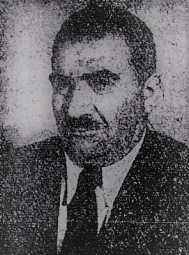 W
WKaro Ghafadaryan was a Soviet Armenian archaeologist, historian, epigraphist, philologist. He was the director of the History Museum of Armenia (1940–1965). "Under his guidance, the Museum became an advanced research and cultural-educational centre" in Armenia.
 W
WIoseb Grishashvili was a pen name of Ioseb Mamulishvili was a noted poet and historian from Georgia. A history museum in Tbilisi, his birth- and death place is named for him.
 W
WLado Gudiashvili was a prominent Georgian artist of the 20th century. Gudiashvili was born into a family of a railroad employee. He studied in the Tbilisi school of sculpture and fine art (1910–1914), where he met the Armenian artist Alexander Bazhbeuk-Melikyan, and later in Ronson's private academy in Paris (1919–1926). For a while, Gudiashvili belonged to a group of Georgian poets called "The Blue Horns" (1914–1918), who were trying to connect organically the Georgian national flavour with the creative structure of French symbolism. In Paris, he was a constant customer of the famous "La Ruche," a colony of painters where he met I. Zuloaga, Amedeo Modigliani, Natalia Goncharova, and Mikhail Larionov. Gudiashvili's work was greatly influenced by Niko Pirosmanashvili.
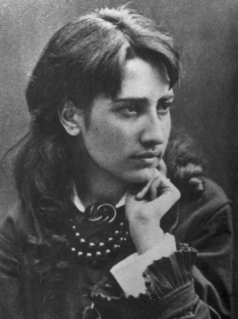 W
WOlga Guramishvili-Nikoladze was a Georgian biologist and educator. One of the first women to study abroad, she earned a degree in pedagogy and brought advanced teaching methods to Georgia. In 1886, she founded a girls' school, and later a women's gymnasium, in Didi Jikhaishi. At the school, she introduced sericulture to the country and taught her students mechanical knitting and weaving. In her later career, she served as the chair of the school board in Poti from 1894 to 1912. She is remembered for her contributions to education and a street in Tbilisi bears her name.
 W
WAleksi Inauri was a Soviet Colonel General and Georgian commander who headed the Georgian KGB for over 30 years (1954–1986) and made it one of the most effective of the KGB's regional Soviet branches. He ended his career as a colonel general and a Hero of the Soviet Union.
 W
WVeli bek Jedigar was a soldier of the Imperial Russian Army and officer of both the Azerbaijani Armed Forces, Polish Army in the Second Polish Republic and the Home Army. He served in different armed forces from 1916 until 1946, fighting in both World War One and World War Two. In the interbellum Poland, he was promoted to commandant of the 7th Lublin Uhlan Regiment.
 W
WJivani, born Serob Stepani Levonian, was an Armenian ashugh (bard) and poet.
 W
WBesarion Ivanes dze Jughashvili, commonly known as Beso, was the father of Joseph Stalin. Born into a peasant family of serfs in Didi Lilo in Georgia, he moved to Tbilisi at a young age to be a shoemaker, working in a factory. He was invited to set up his own shop in Gori, where he met and married Ekaterine Geladze, with whom had three sons; only the youngest, Ioseb, lived. Once known as a "clever and proud" man, Jughashvili's shop failed and he developed a serious drinking problem, wherefore he left his family and moved back to Tbilisi in 1884, working in a factory again. He had little contact with either his wife or son after that point, and little is known of his life from then on, except that he died in 1909 of cirrhosis.
 W
WSimon Arshaki Ter-Petrosian, better known by his nom de guerre of Kamo, was an Old Bolshevik revolutionary and an early companion to Soviet leader Joseph Stalin.
 W
WLev Mikhailovich Karakhan (Karakhanian) Armenian Կարախանյան Լեւոն Միքայելի, Russian Лев Михайлович Карахан was a Russian revolutionary and a Soviet diplomat. A member of the RSDLP from 1904. At first a Menshevik, he joined the Bolsheviks in May 1917.
 W
WGiorgi Kazbegi was a Georgian nobleman and general in the Imperial Russian service. His military and civil career spanned more than four decades, ending with the Bolshevik takeover of Georgia in 1921. He is also an author of military and historical reports, including an account of his 1874 reconnaissance mission to the then-Ottoman held Georgian lands with sketches of the region's medieval Christian monuments.
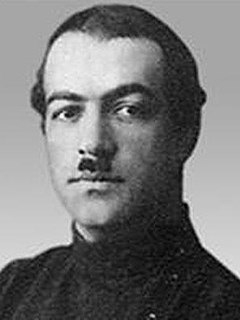 W
WGrigory Davidovich Khakhanyan was a Georgian-born ethnic Armenian Soviet komkor. He fought in the Imperial Russian Army in World War I before going over to the Bolsheviks during the subsequent civil war. During the Great Purge, he was arrested on February 1, 1938 and executed the following year.
 W
WAmayak Zakharovich Kobulov was a Soviet politician and member of the Soviet security and police apparatus during and briefly after the Joseph Stalin years, as was his older brother Bogdan Kobulov.
 W
WBogdan Zakharovich Kobulov was a Soviet politician and member of the Soviet security and police apparatus during the rule of Joseph Stalin, as was his younger brother Amayak Kobulov.
 W
WYervand "Kochar" Kocharyan also known as Ervand Kochar was a prominent sculptor and modern artist of the twentieth century and a founder of Painting in Space art movement. The Ervand Kochar Museum is located in Yerevan, Armenia and showcases much of his work.
 W
WHakob Kojoyan was an Armenian artist.
 W
WLeonida Georgievna Romanova, Grand Duchess of Russia was the consort of Vladimir Kirillovich, Grand Duke of Russia, a pretender to the Russian throne. She was an active and outspoken advocate of the claims advanced by Vladimir and their daughter, Maria Vladimirovna, to be accepted as the legitimate Heads of the Romanov dynasty and de jure sovereigns of the Russian Empire.
 W
WMikhail Karlovich Levandovsky was a Soviet Komandarm 2nd rank. He fought in World War I in the Imperial Russian Army and in the Russian Civil War in the Soviet Red Army. He participated in the Soviet invasions of Georgia and Azerbaijan. He commanded forces in both the Caucasus and Siberia.
 W
WBenjamin "Benik" Egishevitch Markarian was an Armenian astrophysicist. Markarian's Chain was named after him when he discovered that this string of galaxies moves with a common motion. He is also the namesake of a catalog of compact, optically bright galaxies known as Markarian galaxies.
 W
WGiorgi Mazniashvili was a Georgian general and one of the most prominent military figures in the Democratic Republic of Georgia (1918–1921). During the service in the Russian army, he was also known by a Russian transliteration of his surname – Mazniev.
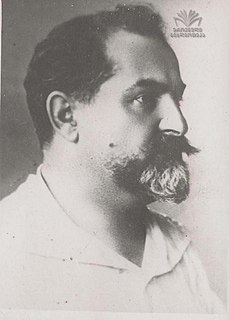 W
WPolikarp "Budu" Gurgenovich Mdivani was a veteran Georgian Bolshevik and Soviet government official energetically involved in the Russian Revolutions and the Civil War. In the 1920s, he played an important role in the Sovietization of the Caucasus, but later led Georgian Communist opposition to Joseph Stalin's centralizing policy during the Georgian Affair of 1922. In the 1930s, he was persecuted for his support of the Trotskyist opposition and executed during the Great Purge.
 W
WAlexander Shamil'evich Melik-Pashayev, PAU, was a Soviet-Armenian conductor. He made numerous highly regarded recordings with Melodiya in the 1940s and 1950s including memorable versions of Boris Godunov and The Queen of Spades.
 W
WVsevolod Nikolayevich (Boris) Merkulov was the head of NKGB from February to July 1941, and again from April 1943 to March 1946. He was a member of the so-called "Georgian mafia" of Lavrenti Beria, head of the NKVD.
 W
WPrince Konstantine Bagration of Mukhrani was a Georgian nobleman from the House of Mukhrani. A member of the Russian Imperial Guard, Konstantine fought with distinction and died in World War I - actions for which he posthumously received the Order of St. George, the highest military decoration of the Empire. Konstantine was in a brief but controversial marriage with Princess Tatiana Constantinovna of Russia, a member of the Russian Imperial Family.
 W
WVano Muradeli, was a Soviet Georgian composer.
 W
WBakir Dursun oglu Mustafayev was an Azerbaijani soldier who served in the Red Army during World War II. Holding the rank of Red Army man he was decorated as a Hero of the Soviet Union. Mustafayev was awarded the title for his actions during the Kerch–Eltigen Operation. During the operation, Mustafayev reportedly killed 40 German soldiers. For his actions, Mustafayev was awarded the title Hero of the Soviet Union on 16 May 1944. He was discharged after the war and lived in Samarqand District.
 W
WMichael Hovhannisyan, known by the pen name Nar-Dos, was an Armenian writer.
 W
WNariman Karbalayi Najaf oglu Narimanov was an Azerbaijani Bolshevik revolutionary, writer, publicist, politician and statesman. For just over one year beginning in May 1920, Narimanov headed the government of Soviet Azerbaijan. He was subsequently elected chairman of the Union Council of the Transcaucasian SFSR. He was also Party Chairman of the Central Executive Committee of the Soviet Union from 30 December 1922 until the day of his death.
 W
WHamo Ohanjanyan was a member of the Armenian Revolutionary Federation. He served as the third Prime Minister of the First Republic of Armenia from May 5 to November 23, 1920.
 W
WMykhailo Omelianovych-Pavlenko was the Supreme Commander of the Ukrainian Galician Army (UHA) and of the Army of the Ukrainian People's Republic. Later, he served as Defence Minister for the Government-in-exile of the Ukrainian People's Republic.
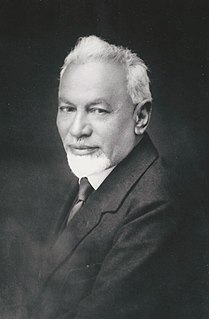 W
WAvetik Hovhannesi Sahakian, also known as Father Abraham, was an Armenian politician, the Parliamentary President (speaker) of the First Republic of Armenia in 1918–19, the social security minister and member of ARF Dashnaktsutiun Eastern Bureau. He was also known as agricultural scientist.
 W
WGrand Duke Sergei Mikhailovich of Russia was the fifth son and sixth child of Grand Duke Michael Nikolaievich of Russia and a first cousin of Alexander III of Russia.
 W
WStepan Georgevich Shaumian was a Bolshevik revolutionary and politician active throughout the Caucasus. Shahumyan was an ethnic Armenian and his role as a leader of the Russian revolution in the Caucasus earned him the nickname of the "Caucasian Lenin", a reference to the leader of the Russian Revolution, Vladimir Lenin.
 W
WPeri-Khan Sofieva was the first Muslim woman elected to office.
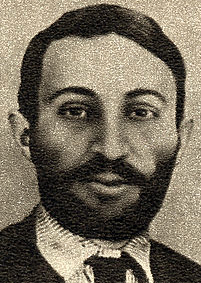 W
WSuren Spandary Spandaryan was an Armenian literature critic, publicist and Bolshevik. In January 1912, he was elected to the Central Committee of the Bolsheviks at the Prague Conference. In March of the same year, Spandaryan was arrested in Baku. Lenin, who considered Spandaryan a "very valuable and prominent worker" supported Spandaryan's father financially after the arrest, since the latter at that time lived in Paris without any means. Spandaryan was sentenced to lifelong exile to Siberia, where he died four years later.
 W
WJoseph Vissarionovich Stalin was a Georgian revolutionary and Soviet politician who ruled the Soviet Union from the mid-1920s until his death in 1953. He served as the general secretary of the Communist Party of the Soviet Union (1922–1952) and premier of the Soviet Union (1941–1953). Despite initially governing the Soviet Union as part of a collective leadership, he eventually consolidated power to become the country's de facto dictator by the 1930s. A communist ideologically committed to the Leninist interpretation of Marxism, Stalin formalised these ideas as Marxism–Leninism, while his own policies are known as Stalinism.
 W
WAleksandr Semenovich Stishinsky was a Russian statesman and nationalist politician.
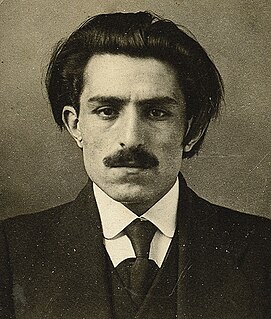 W
WVahan Terian was an Armenian poet, lyrist and public activist. He is known for his sorrowful, romantic poems, the most famous of which are still read and sung in their musical versions.
 W
WNino Tkeshelashvili was a Georgian teacher, writer and women's rights activist. Born into an intellectual family in 1874, she completed the schooling available to her in Tiflis and then worked for a time in Didi Jikhaishi as a Russian language teacher. In 1903, she went to study dentistry in Moscow, where she became involved in the revolutionary student movement during the 1905 Russian Revolution. Returning to Tiflis the following year, she began to meet women writers and activists participating in the struggle for women's rights. She joined the Union of Georgian Women for Equal Rights in 1906, but three years later left the organization and co-founded the Caucasian Women's Society with a breakaway group of feminists.
 W
WAlimardan Alakbar oglu Topchubashov was a prominent Azerbaijani politician, foreign minister and speaker of the Parliament of Azerbaijan Democratic Republic.
 W
WGeorgy Aleksandrovich Tovstonogov was a Russian theatre director.
 W
WCount Sergei Yulyevich Witte, also known as Sergius Witte, was a Russian statesman who served as the first Prime Minister of the Russian Empire. He is widely considered to have been one of the key figures in Russian politics at the end of 19th and at the beginning of the 20th century. He was made a count because of his service to the government in negotiations over the end of the Russo-Japanese War.
 W
WIvan Stepanovich Yumashev was a Soviet Navy admiral, Hero of the Soviet Union, and Commander-in-Chief of the Soviet Navy from January 1947 to July 1951.
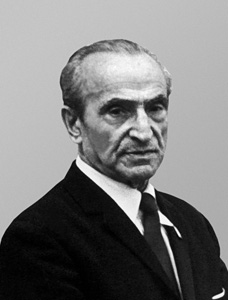 W
WRuben Agasievich Zakharian was a Russian-Armenian painter, who lived and worked in Leningrad. He was a member of the Leningrad Union of Artists, and regarded as one of the representatives of the Leningrad school of painting.